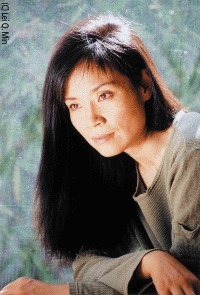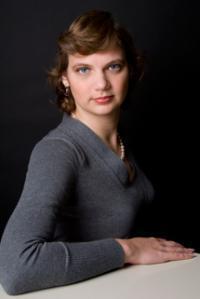When I started my first novel, A Sudden Country, in 1990, I thought it would take a year. Through my ancestry, I'd always felt linked to the story of westward migration. But when I was growing up in the 60s, the story of Oregon emigration had faded into a hazy foundational myth: corny or romantic or shameful, depending on your demographic. I knew it had been none of those. It had been a real event in which real people had taken an incredible leap of faith. What had made them leave safe homes for the unknown? What had they found? I could only guess. But just knowing their stories had given me a willingness to take risks and to endure life's inconveniences, to value survival skills.
As a teacher, I took teenagers into the wilderness and saw how many had no idea what humans were capable of. I told stories of explorers and emigrants and Native Americans how they'd lived and what they'd done. These stories had the power to change their outlooks, too. This history seemed too important to forget, to laugh at or dismiss. That's not to say I wasn't uncomfortable with my colonial legacy. My college years had been informed by the new environmental movement, by AIM, by the rage of historical revisionism that cast Americans not as victims or heroes but as monstrous aggressors. But I knew, again, that the people in conflict at the time had seen a much more complex picture, different from any historical recasting.
I never expected to exorcise my conqueror's guilt, but it did seem necessary to understand this story from the ground from inside those who'd been there. So I wrote, and when the year was out, I realized my presumption. Grand intentions had done nothing but produce a fiction, as absurd as any other, and I was expecting a first child. I put the project away, resolved to make better use of my time. Then, with no less presumption, my husband and I quit our jobs and moved to an Idaho farm. With no money or work to fall back on, driving a trailer full of goats and horses, cats and hens, we arrived on 50 acres and soon had to fix tractors, build barns, dig cellars, grow food. What had we been thinking? Six years passed. I had a girl, then a boy. Each winter I tried to write. By then I'd ridden country once mapped by Hudson's Bay fur traders, snowshoed through winters so long and bleak that I'd come to see how color vermilion or a string of beads could become currency. Now a mother, I'd wondered how one eloquent trader had endured a winter in which his whole family died of smallpox. I'd stood on old village sites, pondered churches built by rival missionaries, learned to butcher deer and split cordwood from a Nez Perce neighbor. Summer days of hoeing and diapering had taught me things I'd never guessed about poverty. Each month brought some new lesson, and for a writer, the most important one was this: that facts and ideas were not enough to write from. Only by feeling a life could I understand it. Only by living could I feel it. Then I was given an account handed down by a true ancestor. Emma Mitchell was 11 when she crossed to Oregon in 1847. Desperate toward the journey's end, her family won permission to winter at the Whitman mission. A month later, the Cayuse massacred the mission's American men, took the women and children hostage. From my farm I could almost see that place, but never imagined my connection. Or guessed that but for a pair of stolen stockings, I might well not exist.
To take up those dry husks of words and know a woman who once woke from dreams, pressed her lips to an infant's hair, found her courage, kept a secret; to know a man who had split wood, built barns, lost love to know these things was to know my new ability to speak for those whose lives had been reduced to names in the backs of Bibles, a saved lock of hair, old pages lit to fire kindling. I abandoned years of drafts, everything I'd done, and began again, hoping (with less presumption now), to honor them.
Karen Fisher now lives with her husband and three children on an island in Puget Sound.


























